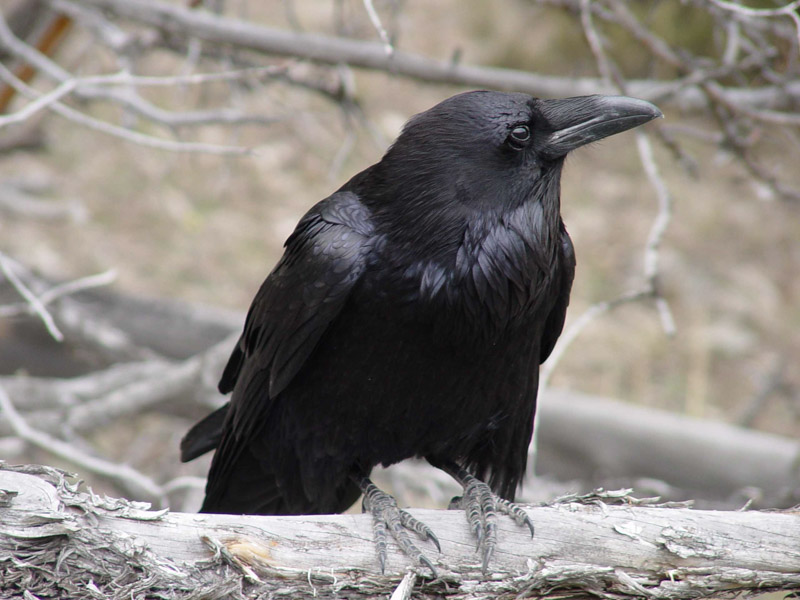10 Animals You May (or May Not) See in Yellowstone
Yellowstone Animals
Yellowstone National Park is not only a popular destination for those looking to explore the great outdoors, but it is also home to the biggest concentration of mammals in the lower 48 states. Here you can catch bison, elk, black bears, wolves, and much more roaming freely throughout the park. Head out on one of our guided tours where you will learn all about Yellowstone National Park animals and how to observe them safely!
The Chances are Good! (Likely to See)
Elk
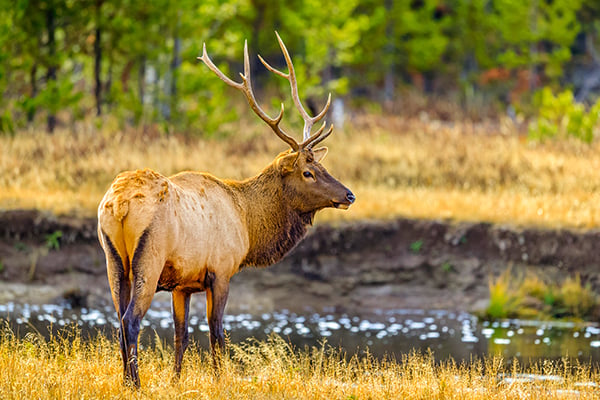
The most abundant large animal found within Yellowstone, Elk summer herd sizes can reach up to 10,000-20,000. Elk bulls are often the most photographed in Yellowstone due to their impressive antler size which can grow to just under 6 feet wide and weigh 30 pounds!
Where to see: Mammoth, Madison Canyon, and Lamar Valley in the summer. During “rut” or mating season the northern range, including Mammoth Hot Springs and the Madison River. Winter elk migrate north to the northern range and around Gardiner, Montana.
Bison
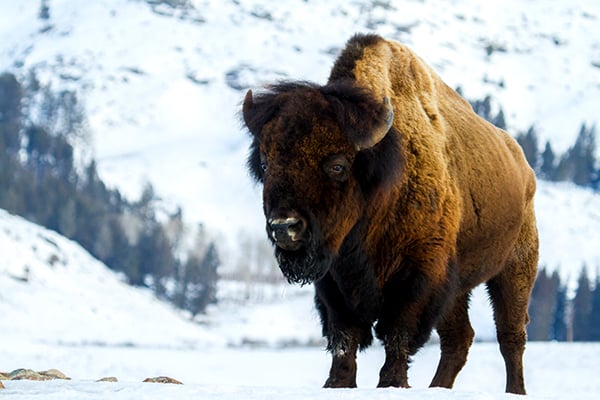
Bison have lived in the park for a long time, in fact, since prehistoric times! Yellowstone bison make up the nation’s largest remaining bison population on public land. Males can grow up to 2,000 pounds while females usually weigh in around 1,000, but don’t let their size fool you, bison can run up to 35 miles per hour and jump heights of over 5 feet!
Where to see: Hayden and Lamar Valleys and in the grasslands in the summer. Hop on a Wake-up to Wildlife Winter tour to head out to Lamar Valley to learn more and observe these large mammals in a winter wonderland.
Ravens
Several raven relatives live in Yellowstone, including the common raven (Corvus corax). Common ravens are smart birds, able to put together cause and effect. Ravens are attracted to wolf kills and may follow wolves while they hunt elk. Wolves also provide better access to carrion, as ravens are not able to rip open thick skin on their own. Ravens are willing to eat almost anything and are frequently seen near parking lots searching for food—some have even learned to unzip and unsnap packs. Do not feed them.
Where to see: All around the park.
Pull out the Binoculars (You Might See)
Wolves
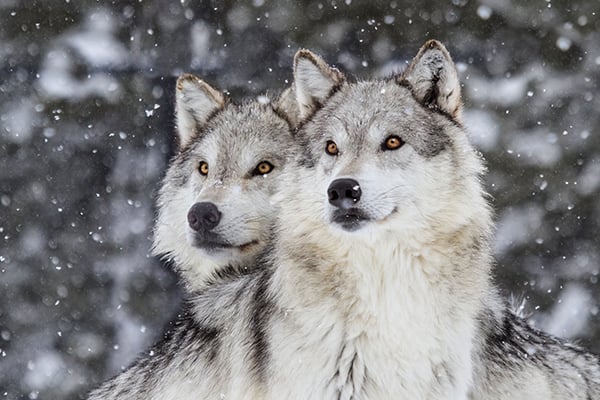
Though their numbers fluctuate, some wolf-packs still call Yellowstone National Park home. They are highly social with an average pack size of 10. Wolves who reside in the park live on average 1-2 years longer than those that live outside the park due to Greater Yellowstone’s commitment to their protection!
Where to see: Most often the Northern Range. Winter is an ideal time to spot wolves! You’ll have an even better chance if you sign up for our Winter Wolf Discovery Package.
Black Bear
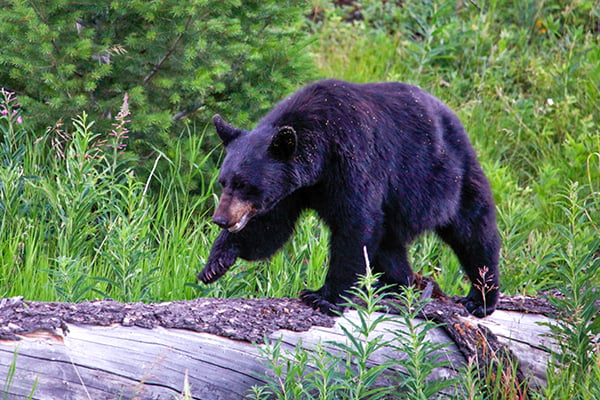
When in Yellowstone, there is a good chance you might just see a black bear or two, the park is actually one of the only areas south of Canada where black bears co-exist with grizzlies. Though called “Black Bears” only 50% are actually black, with the remaining colors being brown, blond or cinnamon.
Where to see: Tower and Mammoth areas. Dive in deep with our Spring Wolf & Bear Discovery Package.
Coyotes
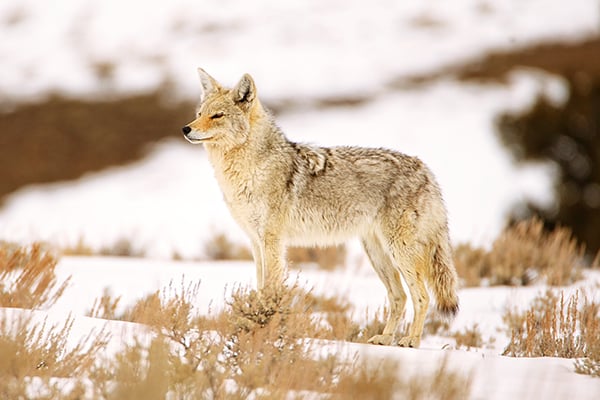
Intelligent and agile, coyotes are not only found throughout urban areas and the wilderness but are quite abundant in Yellowstone National Park. Coyotes are quite vocal; they can be heard most frequently at dusk and dawn.
Where to see: Grasslands such as meadows and fields.
Pronghorn
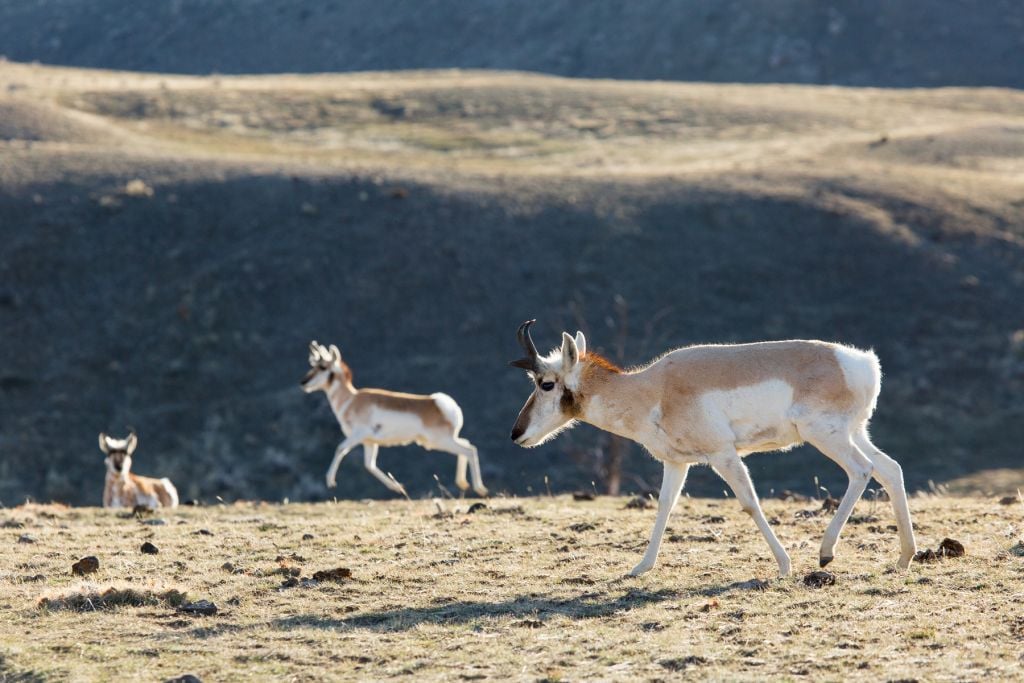
The North American pronghorn (Antilocapra americana) is the surviving member of a group of animals that evolved in North America during the past 20 million years. It is not a true antelope, which is found in Africa and southeast Asia. The use of the term “antelope” seems to have originated when the first written description of the animal was made during the 1804–1806 Lewis and Clark Expedition. They can run for sustained sprints of 45–50 mph!
Where to see: Lamar Valley; the North Entrance at Gardiner, Montana (particularly in the winter time).
Cross Your Fingers But… It’s Unlikely You’ll See
Moose

The tallest of the deer family, the incredibly long legs of the moose allow them to wade in rivers and deep snow and above all—run fast! It takes a lot of food to fuel these large mammals, adults in the summer consume on average 26 pounds of food per day!
Where to see: In the marshy areas of meadows and along bodies of water.
Cougar
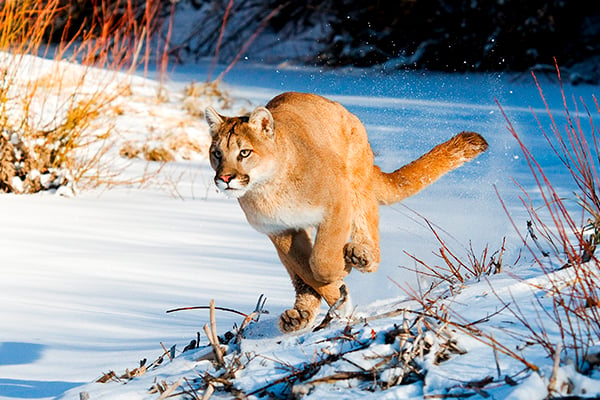
Though they may be the largest of the cat species that call Yellowstone National Park home, as well as one of the top predators—they are very rarely seen. Experienced hunters—cougars prefer rocky terrain and wooded areas where they can quickly escape their competition.
Where to see: Though chances are slim you’ll spot a cougar, if you happen to spot one, they’ll most likely be in rockier areas of the park
Once in a Lifetime Sighting in Yellowstone
Wolverine
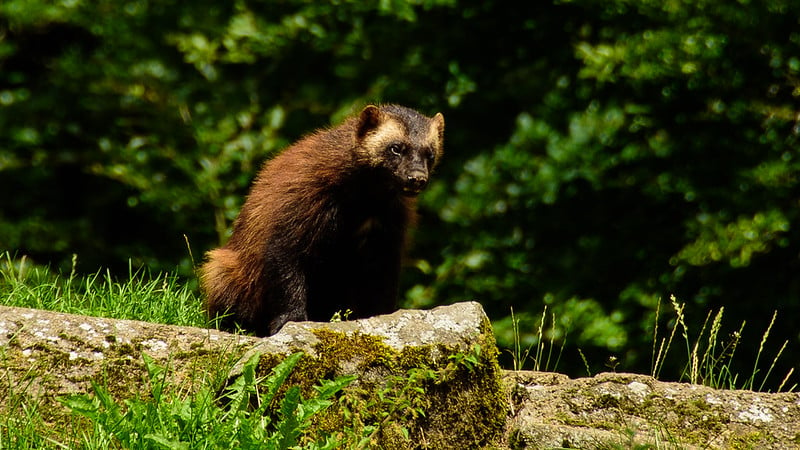
Wolverines, mid-size carnivores in the weasel family, are so rarely seen and inhabit such remote terrain at low densities that assessing population trends is difficult and sudden declines could go unnoticed for years. There have been only seven documented wolverines in eastern Yellowstone.
Where to see: Their habitat is high-elevation islands of boreal (forest) and alpine (tundra) habitat. The few observed in the park have been in the eastern part of the park.
The animals of Yellowstone National Park certainly provide the perfect photo opportunity, but it is important to always practice safety when observing wildlife! Hike in groups, keep your distance, and do not feed the animals in Yellowstone!
For A World of Unforgettable Experiences® available from Xanterra Travel Collection® and our sister companies, visit xanterra.com.
Want to experience Yellowstone in-depth? See what makes Yellowstone National Park a great place to work for a season or longer!
